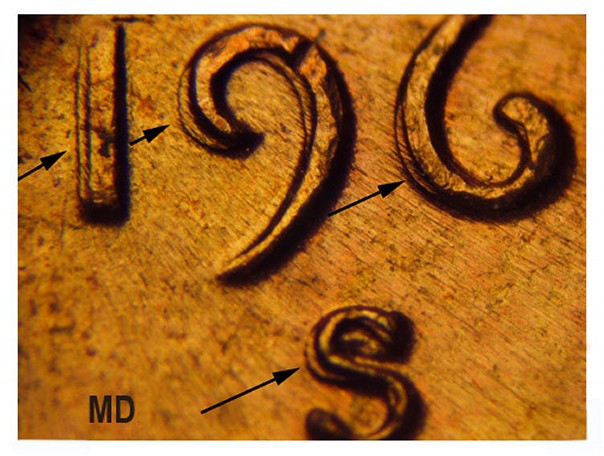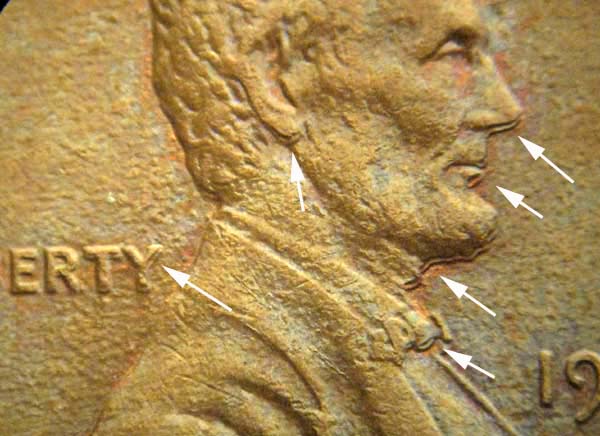PART VI. Striking Errors:
Machine Doubling
Definition: This form of doubling typically results from vibration or instability affecting the die, die assembly, or press frame. It has also occasionally been blamed on a coin sticking to the anvil die during ejection (“ejection doubling”).
Machine doubling has many synonyms: mechanical doubling, machine doubling damage, machine damage doubling, ejection doubling, shift doubling, and strike doubling.
.
There are three basic forms of machine doubling:
Push doubling: Push doubling occurs when a die bounces off the surface of the coin, shifts position, and lands lightly in a different spot. A diagnostic feature is marginal shelving at the edges of design elements. Interior features often show rounded doubling that is easily mistaken for the effects of a double strike or a doubled die. Push doubling can occur on either face, although its most dramatic expressions tend to appear on the face struck by the hammer die. Cases of push doubling can involve up to three closely-spaced sets of accessory design elements. Push doubling can occur on both faces simultaneously and often in different directions. Up to three different doubling directions can be represented on a single face.
Slide doubling: In this form of doubling, a die drags itself through the newly-struck design, smearing the features. Strong cases of slide doubling are always restricted to the face struck by the hammer die. After reaching the lowest point of its downstroke, the hammer die shifts to one side without bouncing. As it drags itself across the newly-struck design, it piles coin metal into a series of ridges. Weak cases of slide doubling found on the reverse face have previously been assigned to “ejection doubling”, but there is no way to prove that this is actually what happened.
Rim-restricted design duplication: This rare form of doubling has to date only been detected on Presidential dollars (Washington to Madison), 1994 cents (several die pairs), a 2004 cent, and certain quarters and dimes where the peripheral letters hug a very narrow design rim. It always occurs on the face struck by the hammer die. After reaching the lowest point of its downstroke, the hammer die bounces up, shifts to one side, and lands lightly on the design rim, leaving a set of raised design elements. It is also sometimes referred to as “one-sided, rim-restricted design duplication”.
The images below show “Push” machine doubling.

